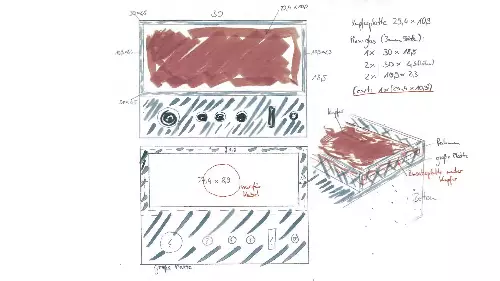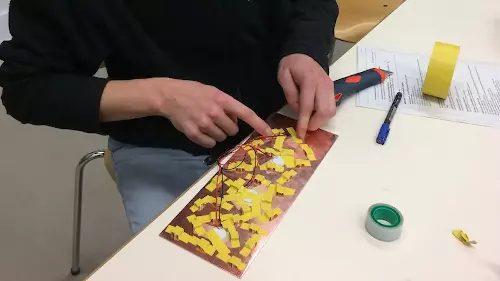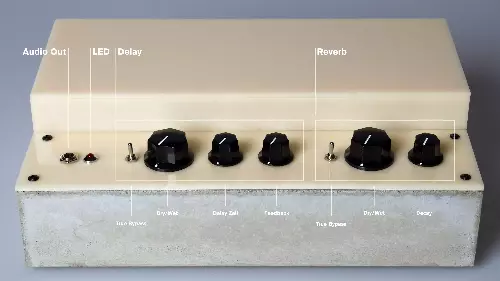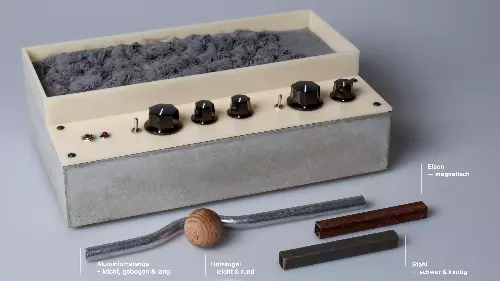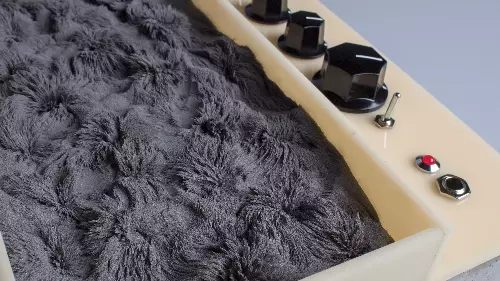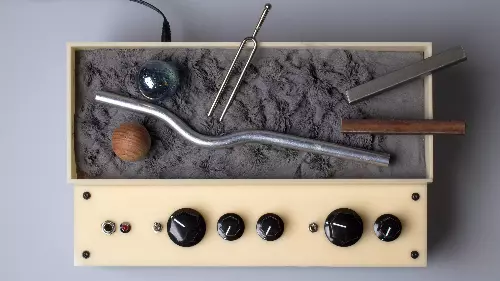by
Method
inspiration?
a method?
It offers a unique combination of research results with a sound scientific basis and a
systematic approach, while also providing space for contingency and poetry.
The 5D method has the potential to be a future resource for your professional creative work.
and Researching
Roughly define the scope/parameters of the project. Familiarise yourself with your project, do some research and put together information on the topic. Choose the work of a creative figure.
Describing, Sorting,and Evaluating
Note down your observations. Here you apply the five dimensions analytically for the first time by defining a small number of keywords for your own project.
does it create?
Visually interpret each keyword in your own style. Use objects for creation and scribblings, even if drawing is not your strength. Finish by organising your visual outputs in an overview.
Check possible combinations and try things out. Work from the simple to the complex. Carry out experiments in the context of your project. The formula should help you find a way of formulating you own series of experiments:
Hook up various insights and specific features from your experiments and consolidate your knowledge to foster a uniform project.
Humor is allowed.
Visualise the five dimensions one more time and use them as a checklist to keep track of the essentials. Begin production and bring the project to a conclusion.
Tansform your project into a specific form of presentation ready to be share with anyone.
DocumentingTidy up, file things away, prepare, and get the ball rolling.
Marius Claßen, Rebekka Eversmann, Alexandra Martini,
Jan Schulz Project Scope
Working with light and space to critically examine a current topic. Get guided through the steps in
three phases!
Take a visual tour through each dimension used in analysing a simple white cube and find out how keywords can be defined.
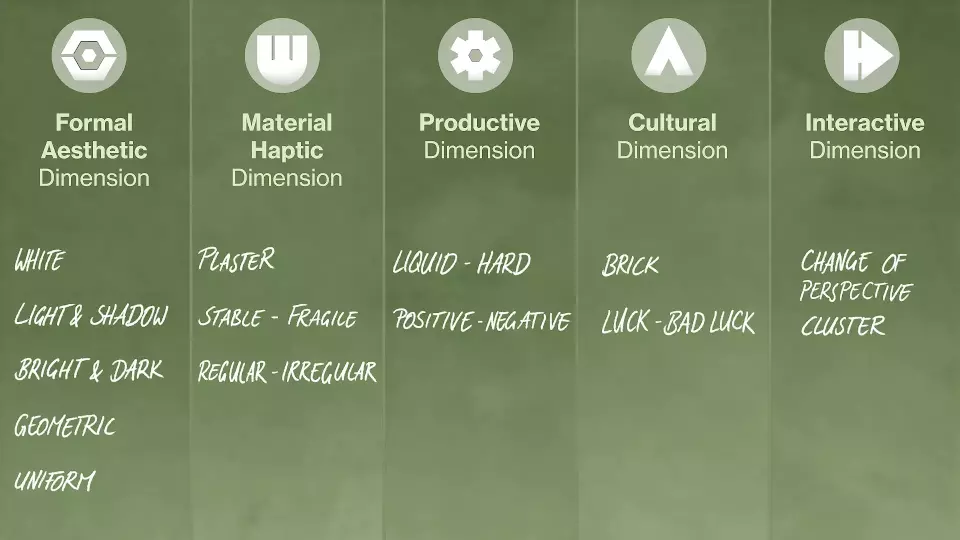
Studies are carried out in the combination of core concepts, project context and dimensions. Leading on from the experiments in the Formal-Aesthetic and Productive Dimensions, it is fascinating to use light and shadow to enhance visualisation on and with geometric bodies.
The dynamics of deformation and destruction in the combination of the
Material-Haptic Dimension and the Cultural Dimension lead us to the critical
topic of climate change.
The Interactive Dimension transforms the desired change of perspective into an
exhibition that allows visitors to spatially experience the valuable resource of
water.
In the Panzerhalle (Armour Hall) of the University of Applied Sciences Potsdam projection mappings show problems such as soil sealing in urban areas, pollution, heavy rainfall, the use of water as an instrument of power, limited quality of life and unequal distribution.

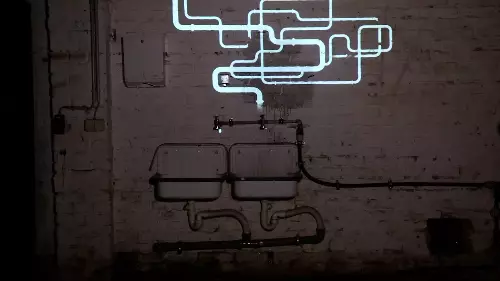
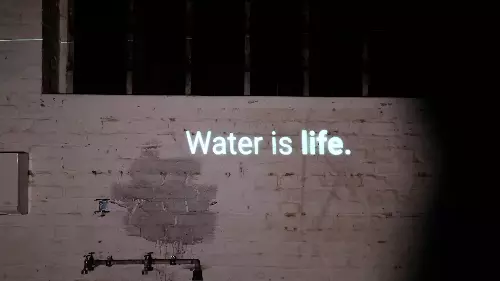
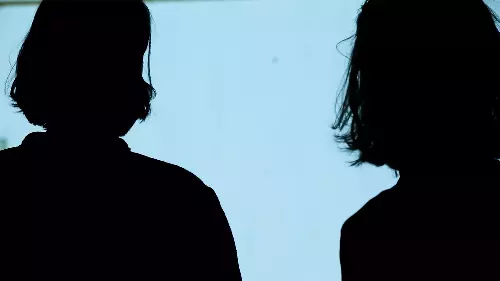
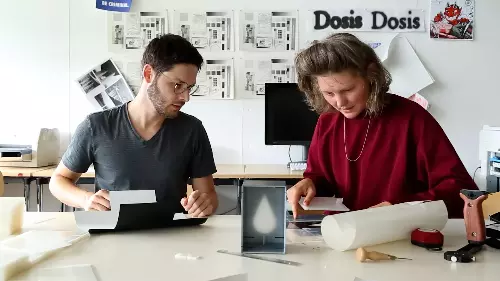
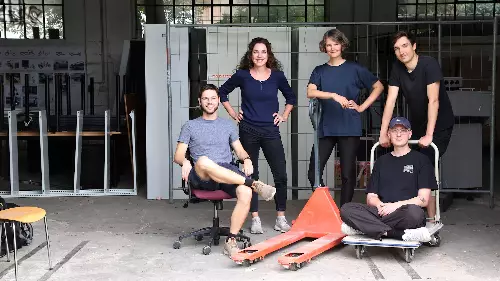
Million years ago. Project by
Theresa Rohrberg & Sascha Nuber Project Scope
Development of a spatial installation using a casting technique.
Visualisation of terms inspired by the work of artist Gerard Caris.
Glass plates and crystals made out of sugar, bicarbonate and starch, with the help of a casting technique were used to create the main elements.
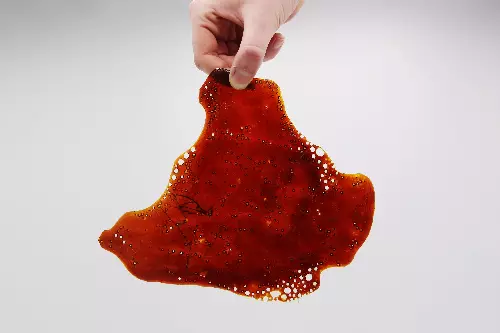
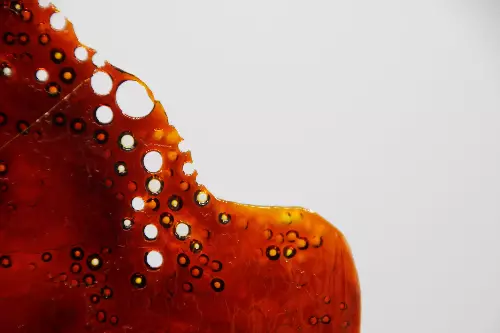
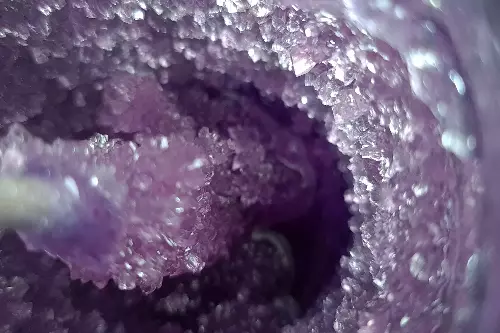
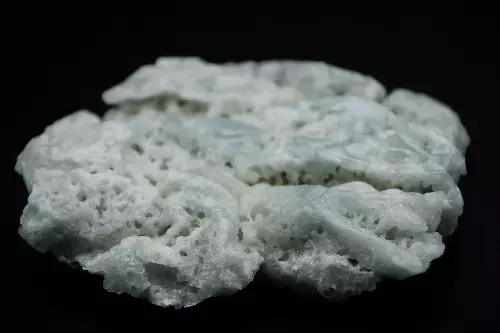

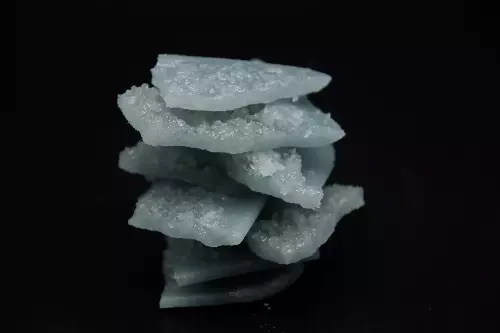
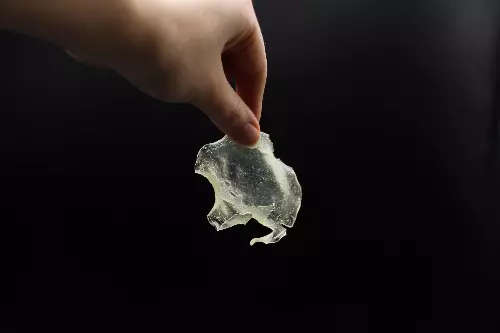
Based on the impressive results in the Formal-Aesthetic Dimension, a
kaleidoscope aesthetic was combined with animations. Examining the
Material-Haptic and Productive Dimensions led to a focus on growing crystals.
The Cultural Dimension inspired us to work around the Anthropocene and the
Interactive Dimension helped us to come up with an immersive presentation
format.
In a short movie of less than four minutes, viewers are invited to travel through a time to experience the history of the earth over 4.5 billion years.
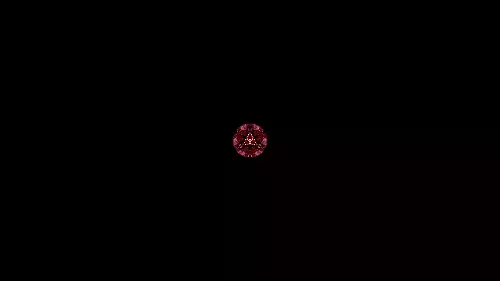
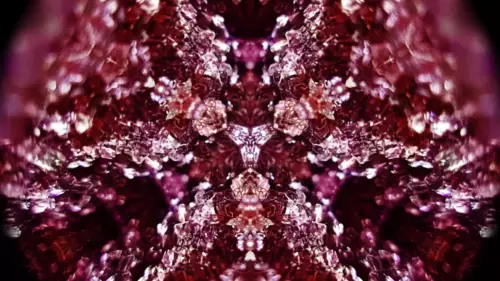
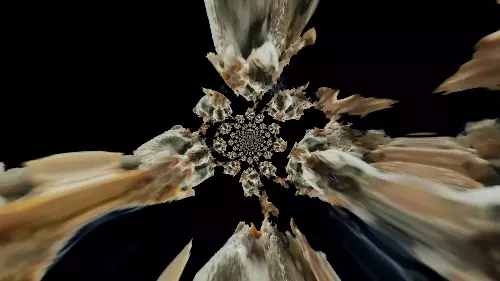
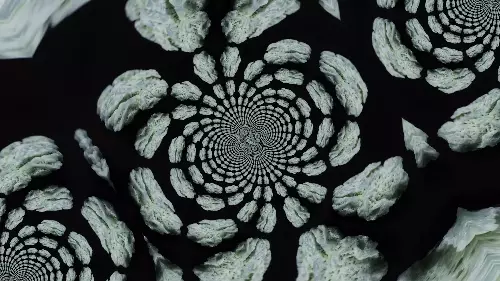
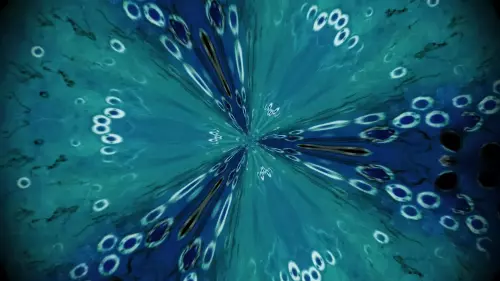
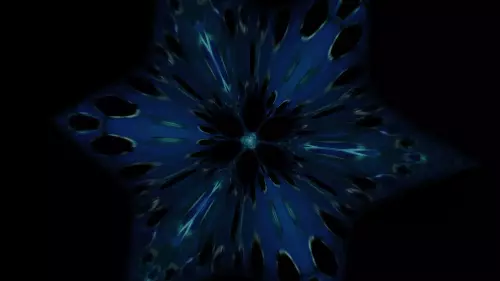
Daniel Birnbaum, Maike Panz, Paula Schuster & Marc-Philip Sommer Project Scope
Development of a spatial installation using light.
The first visualisations refer to the work of László Moholy-Nagy, particularly his film “Lichtspiel Schwarz-Weiß-Grau” (“A Lightplay: Black White Gray”).
Light is projected onto a screen through the channels or corrugated cardboard.
Different point light sources and distances were tested on the projection
screen.
The final aesthetic of the experiments is a digital pixel effect.
Through the coincidental examination of various translucent and light filtering materials surprising effects are produced in the Material-Haptic and Productive Dimension. The Cultural Dimension leads to a way of thinking critically about new technologies. The Interactive Dimension encourages us to play with ways of involving the users/visitors.
What can be transferred from the analogue world to the digital one?
Papp Pixel is an interactive light installation that blurs the boundaries
between both of these worlds.
Users can move the fishing rod to pick the words for each panel and eventually
build a full sentence with the rest of the panels. The contrast between the
digital effect of the light and its analogue production inspired us to address
the digitisation of society itself.
Jannis Hektor, Syuga Raytila, Peter Schwarz & Max Tamm Project Scope
Development of an object using a casting technique.
The first sketches and representations were inspired by Bridget Riley’s work “Blaze”, which uses moiré effects and optical illusions to visualise hallucinations and psychedelic experiences.
Experiments were carried out with iron powder dissolved in various liquids in
the Material-Haptic Dimension.
In the Productive Dimension electromagnets were placed in a basin to regulate
the liquid. These were controlled via ultrasonic sensors with the help of an
Arduino microcontroller. The quality of sound, interaction and sensuality
becomes a core element of the Cultural and Interactive Dimensions.
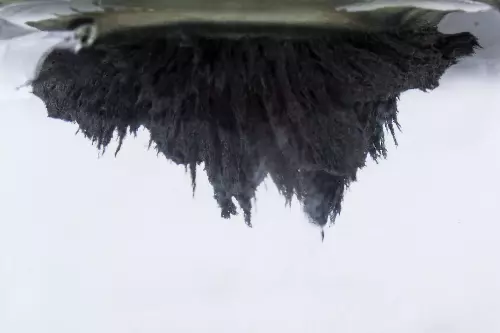
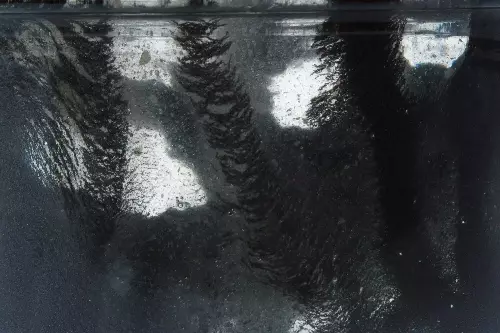
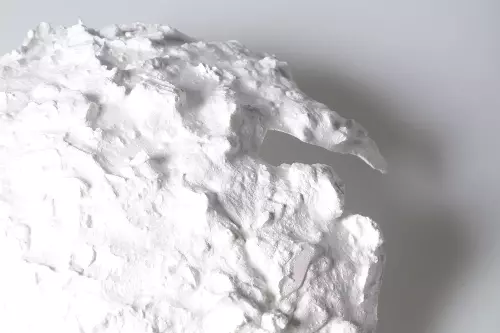
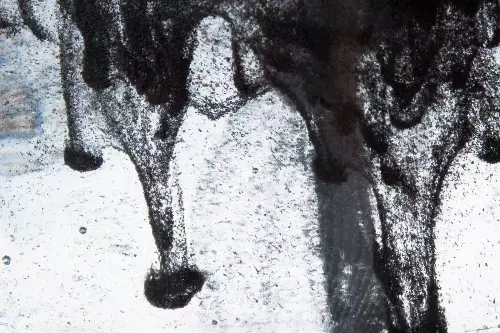
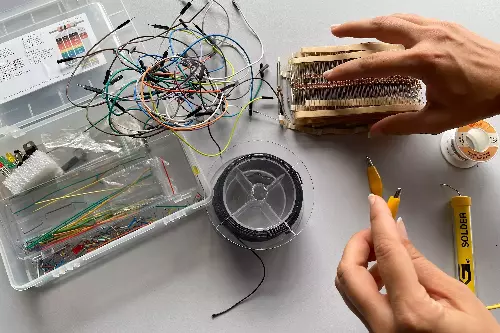
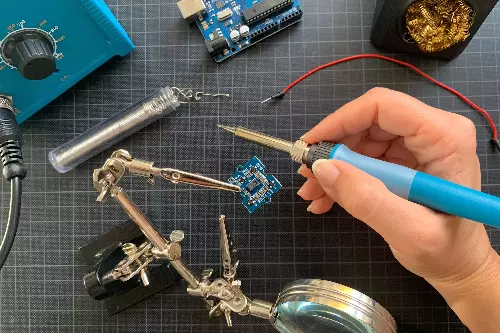
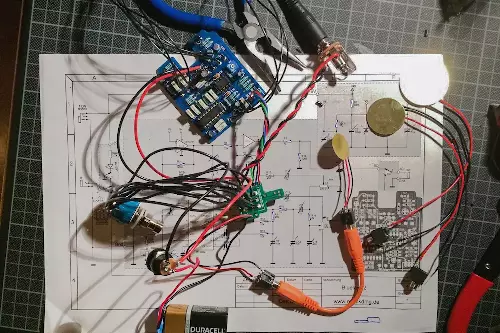
With the help of five potentiometers the sound can be manipulated and eventually
modulated as necessary.
If you draw an image in the powder with your fingers, the image becomes audible.
Each touch sounds different. Depending on the intensity of the touch, the signal
will be quieter or louder. Listen to it!
